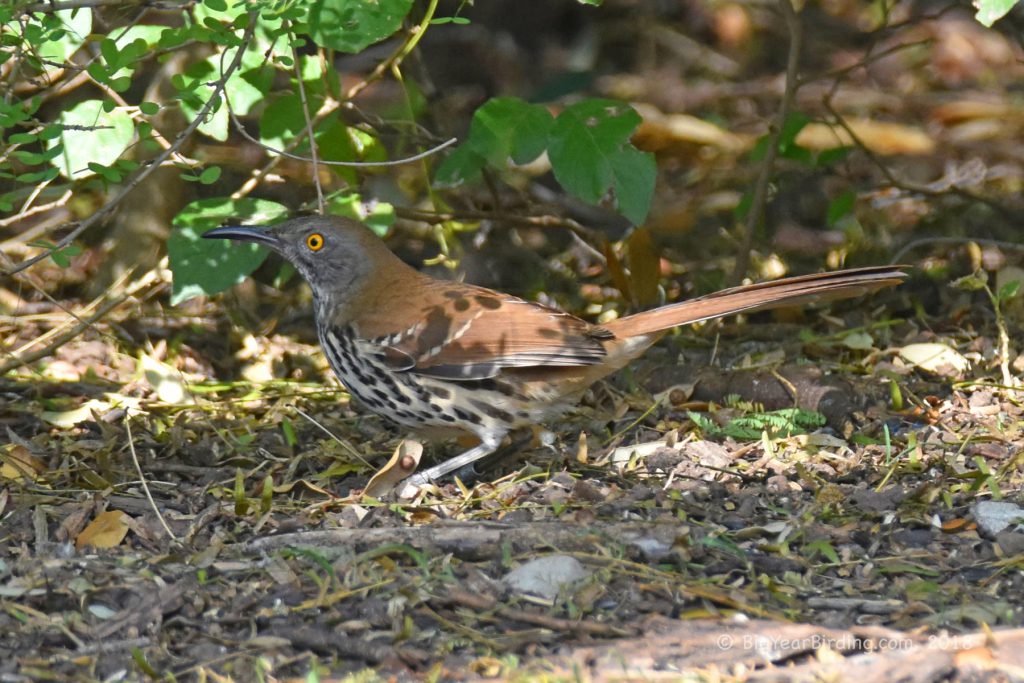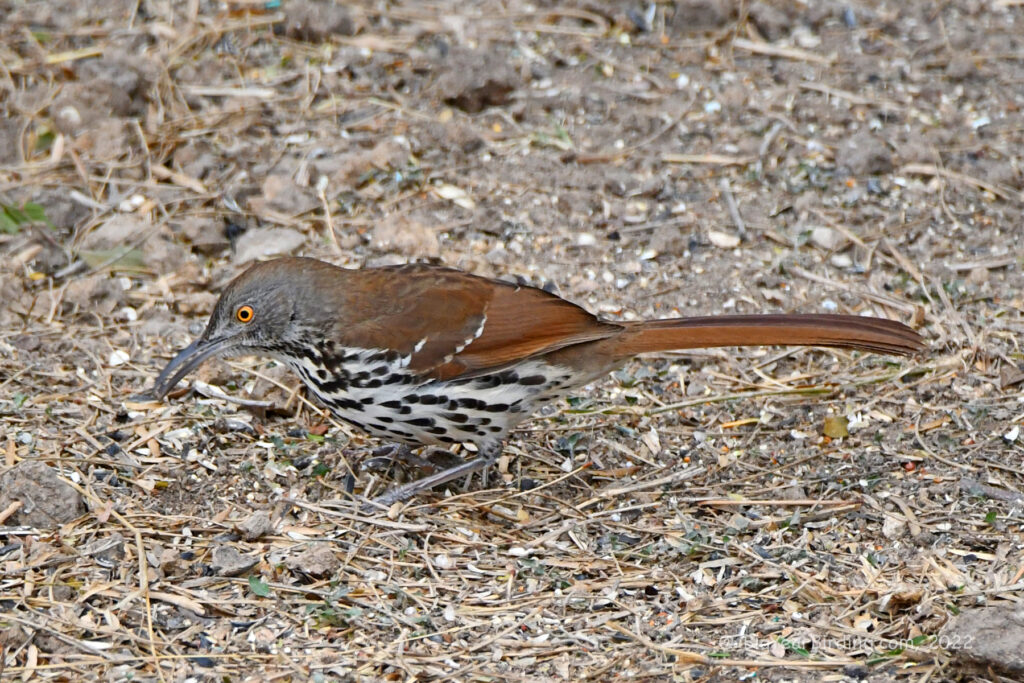
The Long-billed Thrasher (Toxostoma longirostre) is a large songbird that can be found in the southwestern United States and Mexico. Adults typically measure 10-12 inches in length and have a wingspan of around 14 inches. They weigh between 2.4-2.8 ounces. The Long-billed Thrasher is one of the larger thrasher species, and its long, curved bill is a distinguishing feature that sets it apart from other thrashers.
The Long-billed Thrasher is mostly brown with a slightly darker back and lighter underparts. They have a distinctive streaked pattern on their chest and belly, and their tail is long and often held upright. They also have a prominent white eyebrow stripe and a dark eye line. Juvenile birds are similar in appearance to adults but have a slightly duller coloration.

Long-billed Thrashers are non-migratory birds, with some populations being resident year-round, while others may move short distances to avoid harsh weather conditions. They are commonly found in dry, arid habitats such as deserts, scrublands, and mesquite thickets. They are also known to inhabit suburban and urban areas, where they can be found in parks and gardens.
The Long-billed Thrasher is a territorial bird and is known for its distinctive and complex song. They are omnivorous and feed on a variety of insects, fruits, and seeds. They forage on the ground, using their long bills to dig for food in the soil. They are also known to hop and scratch in the leaf litter to uncover food.
Long-billed Thrashers are relatively common and widespread in their range, but their populations have declined in some areas due to habitat loss and fragmentation. Conservation efforts to protect their habitat are crucial to ensuring their continued survival. Overall, the Long-billed Thrasher is a fascinating bird species with a unique appearance and interesting behaviors.
